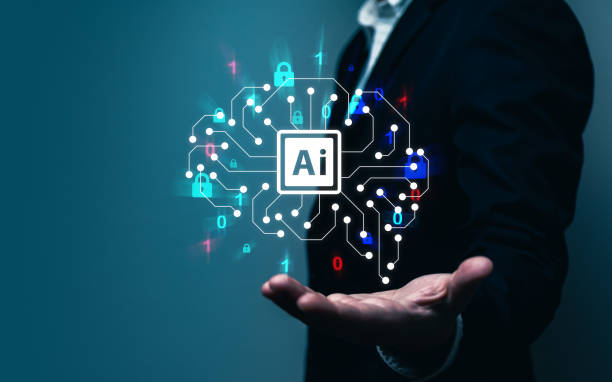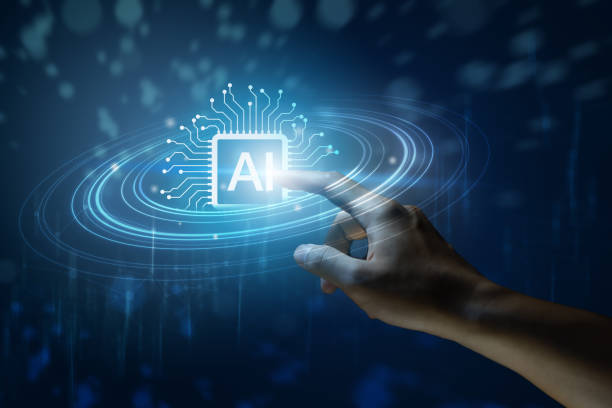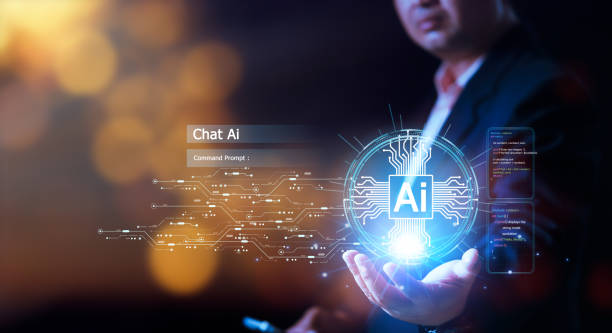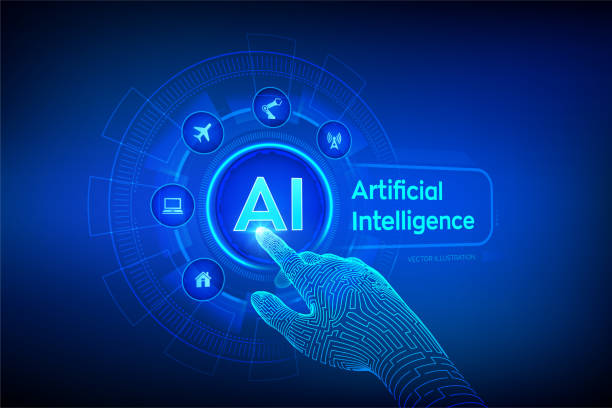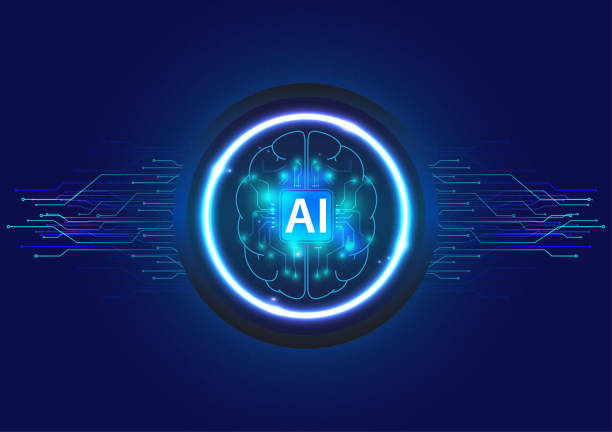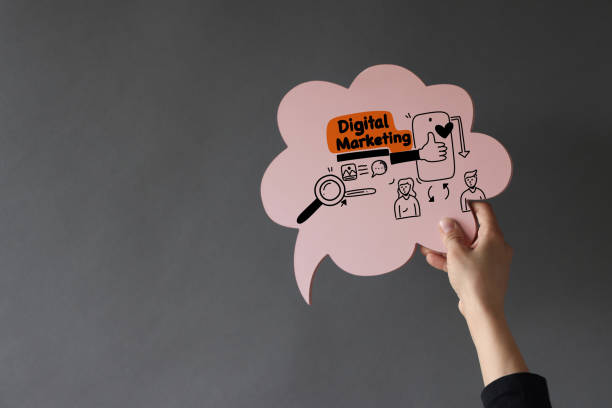What is an Artificial Intelligence Robot? Key Definitions and Concepts
In today’s world, the term #artificial_intelligence_robot is increasingly heard.
But what exactly is an #ai_robot? Simply put, Artificial Intelligence (AI) refers to the development of computer systems capable of performing tasks that typically require human intelligence, such as learning, reasoning, problem-solving, and perception.
#AI_robots refer to robotic systems that utilize these artificial intelligence technologies.
These robots are able to interact with their environment, analyze data, and make decisions based on it.
In other words, an artificial intelligence robot is not only a moving machine, but also an intelligent system that can learn, adapt, and operate automatically.
These robots have applications in various fields, from industry and manufacturing to customer service and even healthcare.
The main difference between a regular robot and an artificial intelligence robot is in their level of intelligence and flexibility.
Regular robots are usually programmed to perform repetitive and pre-determined tasks, while artificial intelligence robots can adapt to new situations and adjust their decisions based on the information received.
This ability allows artificial intelligence robots to perform better in complex and unpredictable environments and perform tasks that were previously considered impossible for machines.
For example, an artificial intelligence robot can identify product defects on a production line, or answer customer questions in a call center.
Is your online sales not performing as expected? With Rasaweb, solve the problem of low sales and poor user experience forever!
✅ Increase visitor-to-customer conversion rate
✅ Create an enjoyable user experience and increase customer trust
⚡ Act now for a free consultation!
Artificial Intelligence Robot Architecture – Components and How It Works
The architecture of an #artificial_intelligence_robot consists of various components that, working together, enable the intelligent functioning of the robot.
These components include:
- Sensors Sensors allow the robot to collect information from its environment.
These sensors can include cameras, microphones, temperature sensors, pressure sensors, light sensors, and more. - Processor The processor is responsible for processing the information collected by the sensors and making decisions.
This processor is usually a powerful computer that runs artificial intelligence algorithms. - Actuators Actuators allow the robot to interact with its environment.
These actuators can include motors, arms, wheels, speakers, and more. - Artificial Intelligence Software The #artificial_intelligence software is the beating heart of the #ai robot.
This software includes machine learning algorithms, neural networks, and other artificial intelligence techniques that allow the robot to learn, reason, and make decisions.
The way an #ai_robot works is that the sensors collect information from the environment, this information is sent to the processor, the processor analyzes the information using the artificial intelligence software and makes decisions, and finally, the actuators act based on these decisions.
For example, an artificial intelligence robot working in a warehouse can use its cameras and sensors to identify the location of objects, use machine learning algorithms to find the optimal route to reach those objects, and use its arms to pick up the objects and place them in the appropriate place.
Types of Artificial Intelligence Robots – Categorization Based on Application and Capability
#Artificial_intelligence_robots can be divided into different categories based on their application and capabilities.
Some of these categories include:
- Industrial Robots These robots are used to perform automated tasks in industrial environments.
They can perform tasks such as welding, painting, packaging, and assembly. - Service Robots These robots are designed to provide services to humans.
They can work in hospitals, hotels, restaurants, and other places. - Medical Robots These robots are used to assist doctors in performing surgeries, rehabilitating patients, and other medical tasks.
- Military Robots These robots are used to perform dangerous and difficult tasks in military environments.
They can act as soldiers, spies, or bombers. - Space Robots These robots are used for space exploration and conducting research tasks in space environments.
In addition to these categories, #artificial_intelligence_robots can also be categorized based on their level of intelligence.
Some robots can only perform simple and pre-determined tasks, while others can learn, reason, and make complex decisions.
In general, the higher the level of intelligence of a robot, the wider its applications will be.
| Robot Type | Application |
|---|---|
| Industrial Robot | Performing automated tasks in industry |
| Service Robot | Providing services to humans |
| Medical Robot | Assisting doctors in treating patients |
Applications of Artificial Intelligence Robots in Various Industries
#Artificial_intelligence_robots have wide applications in various industries.
In industry, they can be used to perform automated tasks, increase productivity, and reduce costs.
For example, in the automotive industry, robots can be used for welding, painting, and assembling car parts.
In the electronics industry, they can be used to manufacture and test electronic components.
In healthcare, #ai_robots can be used to assist doctors in performing surgeries, diagnosing diseases, and rehabilitating patients.
For example, surgical robots can perform complex surgeries with greater precision.
Rehabilitation robots can help patients regain movement after a stroke or spinal cord injury.
In financial services, #ai_robots can be used to detect fraud, manage risk, and provide customer service.
For example, fraud detection robots can identify suspicious patterns in financial transactions.
Customer service robots can answer customer questions and solve their problems.
In retail, #ai_robots can be used to manage inventory, provide product recommendations, and provide customer service.
For example, inventory management robots can automatically adjust the inventory levels of products.
Product recommendation robots can suggest products to customers based on their purchase history.
Are you worried that your company’s old website will drive away new customers? Rasaweb solves this problem by designing a modern and efficient company website.
✅ Increases your brand credibility.
✅ Helps to attract targeted customers.
⚡ Contact Rasaweb for a free consultation!
Advantages and Disadvantages of Using Artificial Intelligence Robots
The use of #ai_robots has several advantages and disadvantages.
Among the advantages are the following:
- Increased Productivity #AI_robots can perform tasks faster and more accurately than humans, leading to increased productivity.
- Cost Reduction #AI_robots can reduce labor costs and can also prevent human errors, which leads to reduced repair and maintenance costs.
- Improved Safety #AI_robots can perform dangerous tasks, which leads to improved workplace safety.
- Better Service Delivery #AI_robots can improve customer service and can also provide personalized services.
Among the disadvantages of using #ai_robots are the following:
- High Initial Cost #AI_robots are usually more expensive than traditional machines.
- Need for Expertise Setting up and maintaining #ai_robots requires expertise.
- Job Loss The use of #ai_robots can lead to the loss of human jobs.
- Ethical Concerns The use of #ai_robots can raise ethical concerns, such as concerns about privacy and security.
In general, the decision on whether to use an #ai_robot should be made taking into account its advantages and disadvantages, as well as the specific circumstances of each case.
Challenges of Developing and Implementing Artificial Intelligence Robots
The development and implementation of #ai_robots faces several challenges.
One of these challenges is the lack of training data.
#AI_robots need a large amount of data to learn and improve their performance.
Preparing this data can be expensive and time-consuming.
Another challenge is the complexity of #ai algorithms.
These algorithms can be very complex and require expertise to understand and implement.
Also, #ai algorithms may be biased, which can lead to unfair decisions.
The third challenge is hardware limitations.
#AI_robots need powerful hardware to process data and run #ai algorithms.
This hardware can be expensive and may also create limitations in the size and weight of the robot.
The fourth challenge is security issues.
#AI_robots may be subject to cyberattacks, which can lead to information theft or disruption of their operation.
Also, #ai_robots may be used for malicious purposes, such as attacking humans.
To overcome these challenges, there is a need for investment in research and development, training skilled workforce, and creating security standards.
The Future of Artificial Intelligence Robots – Trends and Predictions
The future of #ai_robots looks very bright.
Recent advances in the field of #ai, machine learning, and robotics have led to the development of #ai_robots that are capable of performing tasks that were previously considered impossible for machines.
It is predicted that in the future, #ai_robots will play a more important role in various areas of our lives.
Click here to preview your posts with PRO themes ››
One of the important trends in the field of #ai_robots is the development of #collaborative_robots.
#Collaborative_robots are designed to work alongside humans and can assist them in performing repetitive and dangerous tasks.
It is predicted that in the future, #collaborative_robots will be widely used in various industries, including the manufacturing, construction, and logistics industries.
Another trend is the development of #self-driving_robots.
#Self-driving_robots are able to move and perform tasks without human intervention.
These robots can be used in various areas, including transportation, agriculture, and space exploration.
It is predicted that in the future, #self-driving_robots will play an important role in reducing traffic, increasing productivity, and exploring remote areas.
In addition, it is predicted that in the future, #ai_robots will be increasingly able to learn and adapt to their environment.
This will allow them to perform more complex tasks and perform better in unpredictable environments.
In general, the future of #ai_robots is very promising and this technology can help solve many of humanity’s problems.
Case Study of Artificial Intelligence Robots – Successful and Unsuccessful Examples
A case study of #ai_robots can help us better understand this technology and its applications.
In this section, we will examine a few successful and unsuccessful examples of #ai_robots.
Successful Examples
- Da Vinci Surgical Robots These robots are designed to assist doctors in performing minimally invasive surgeries.
They allow doctors to perform surgeries with greater precision and delicacy, which leads to reduced pain and faster patient recovery. - Amazon Warehouse Robots These robots are used to move and sort goods in Amazon warehouses.
They help Amazon process customer orders faster and more efficiently. - Chatbot Robots These robots are used to provide customer service online.
They can answer customer questions and solve their problems.
Unsuccessful Examples
- Tay Robot This robot was a chatbot developed by Microsoft.
Tay was active on Twitter and increased her knowledge by learning from interactions with users.
Unfortunately, Tay quickly began posting offensive and racist tweets, and Microsoft had to take it offline. - Knightscope Robot This robot was a security robot designed to patrol commercial properties.
Knightscope had several accidents, including colliding with people and falling into a pond.
These examples show that the development and implementation of #ai_robots requires careful planning, appropriate training data, and attention to security and ethical issues.
| Robot Name | Result |
|---|---|
| Da Vinci Surgical Robot | Successful |
| Tay Robot | Unsuccessful |
| Knightscope Robot | Unsuccessful |
Tired of losing business opportunities due to not having a professional company website? Don’t worry anymore! With Rasaweb’s corporate website design services:
✅ The credibility and professionalism of your brand increases.
✅ You attract more customers and sales leads.
⚡ Get a free consultation to get started now!
Ethical Considerations in the Development and Use of Artificial Intelligence Robots
The development and use of #ai_robots raises important ethical considerations.
One of these considerations is the issue of accountability.
If an #ai_robot causes damage, who will be responsible? Is the robot’s manufacturer, its programmer, or its user responsible?
Another consideration is the issue of bias.
#AI algorithms may be biased, which can lead to unfair decisions.
For example, if a hiring algorithm is trained on past data, it may inadvertently discriminate on the basis of gender or race.
The third consideration is the issue of privacy.
#AI_robots can collect a lot of information about us, such as our shopping habits, interests, and location.
This information can be used for advertising or surveillance purposes.
The fourth consideration is the issue of security.
#AI_robots may be subject to cyberattacks, which can lead to information theft or disruption of their operation.
Also, #ai_robots may be used for malicious purposes, such as attacking humans.
To address these ethical considerations, there is a need to create appropriate laws and regulations, train professionals, and raise public awareness.
Key Tips for Choosing and Using the Right Artificial Intelligence Robot
Choosing and using the right #ai_robot requires careful consideration.
In this section, we will point out a few key tips for choosing and using the right #ai_robot.
- Determine Needs First of all, you need to accurately determine your needs.
What tasks do you want to assign to the #ai_robot? What expectations do you have of it? - Research After determining your needs, you should research the different types of #ai_robots.
What features are important to you? What price can you pay? - Compare After researching, you should compare the different #ai_robots.
Which one is the best option for you? - Test Before buying, if possible, test the #ai_robot.
Does its performance meet your expectations? - Training After purchasing, train your staff on how to use the #ai_robot.
- Maintenance Maintain the #ai_robot regularly.
This helps to increase its lifespan. - Update Update the #ai_robot regularly.
This will improve its performance and security.
Click here to preview your posts with PRO themes ››
By following these tips, you can choose the right #ai_robot and benefit from its advantages.
Frequently Asked Questions
| Question | Answer |
|---|---|
| What is an Artificial Intelligence Robot? | An Artificial Intelligence (AI Robot) is a machine capable of understanding the environment, reasoning, learning, and making decisions to perform tasks independently. |
| What is the difference between ordinary robots and artificial intelligence robots? | Ordinary robots perform repetitive tasks based on pre-planning, while artificial intelligence robots can learn from experience, interact dynamically with the environment, and even behave in a way that resembles human intelligence. |
| What are the main applications of artificial intelligence robots? | They are used in industries (manufacturing, assembly), medicine (surgery, diagnosis), services (customer support, home), exploration (space, underwater), and many other fields. |
| What technologies are used in the construction of artificial intelligence robots? | Machine Learning, Computer Vision, Natural Language Processing, Deep Learning, and Robotics are among the key technologies. |
| Can artificial intelligence robots have feelings? | Currently, robots do not have feelings in the human sense. They can identify and react to emotions, but they do not experience emotions themselves. |
| What are the main challenges in the development of artificial intelligence robots? | Safety, reliability, ethics, autonomy, adaptability to complex environments, and natural interaction with humans are important challenges. |
| How are artificial intelligence robots trained? | They are usually trained using a large volume of data, machine learning algorithms, and deep learning to identify patterns and make decisions. |
| Examples of artificial intelligence robots in everyday life? | Smart robotic vacuum cleaners, customer support chat robots, self-driving cars, and surgical robots in hospitals. |
| Are artificial intelligence robots a threat to human jobs? | Some repetitive jobs may be automated, but at the same time, robots can increase productivity and create new jobs in the development, maintenance, and monitoring of these systems. |
| How is the future of artificial intelligence robots predicted? | They are expected to become smarter, more autonomous, and capable of performing more complex tasks, and to interact more closely with humans in various environments. |
And other services of Rasa Web Advertising Agency in the field of advertising
Smart Marketplace: A professional solution to increase website visits by focusing on attractive user interface design.
Smart Conversion Rate Optimization: A new service to increase the click-through rate by managing Google Ads.
Smart Custom Software: An exclusive service to grow sales based on optimizing key pages.
Smart Sales Automation: Professional optimization for online growth using user experience customization.
Smart Data Analysis: A combination of creativity and technology for online growth by using real data.
And more than a hundred other services in the field of internet advertising, advertising consulting, and organizational solutions
Internet Advertising | Advertising Strategy | Advertorial
Sources
What is ChatGPT and what are its applications?
,What is an Artificial Intelligence Robot? Types and applications in businesses
,All about Artificial Intelligence Robots; Introducing types and benefits of using it
,What is an Artificial Intelligence Robot? | Types of AI Robots + Applications in Industry
? For a powerful and lasting presence in the digital space, Rasaweb Digital Marketing Agency, with innovative solutions including fast website design and professional, is a constant companion of your business.
📍 Tehran, Mirdamad Street, next to the Central Bank, Southern Kazerun Alley, Ramin Alley No. 6
“`



